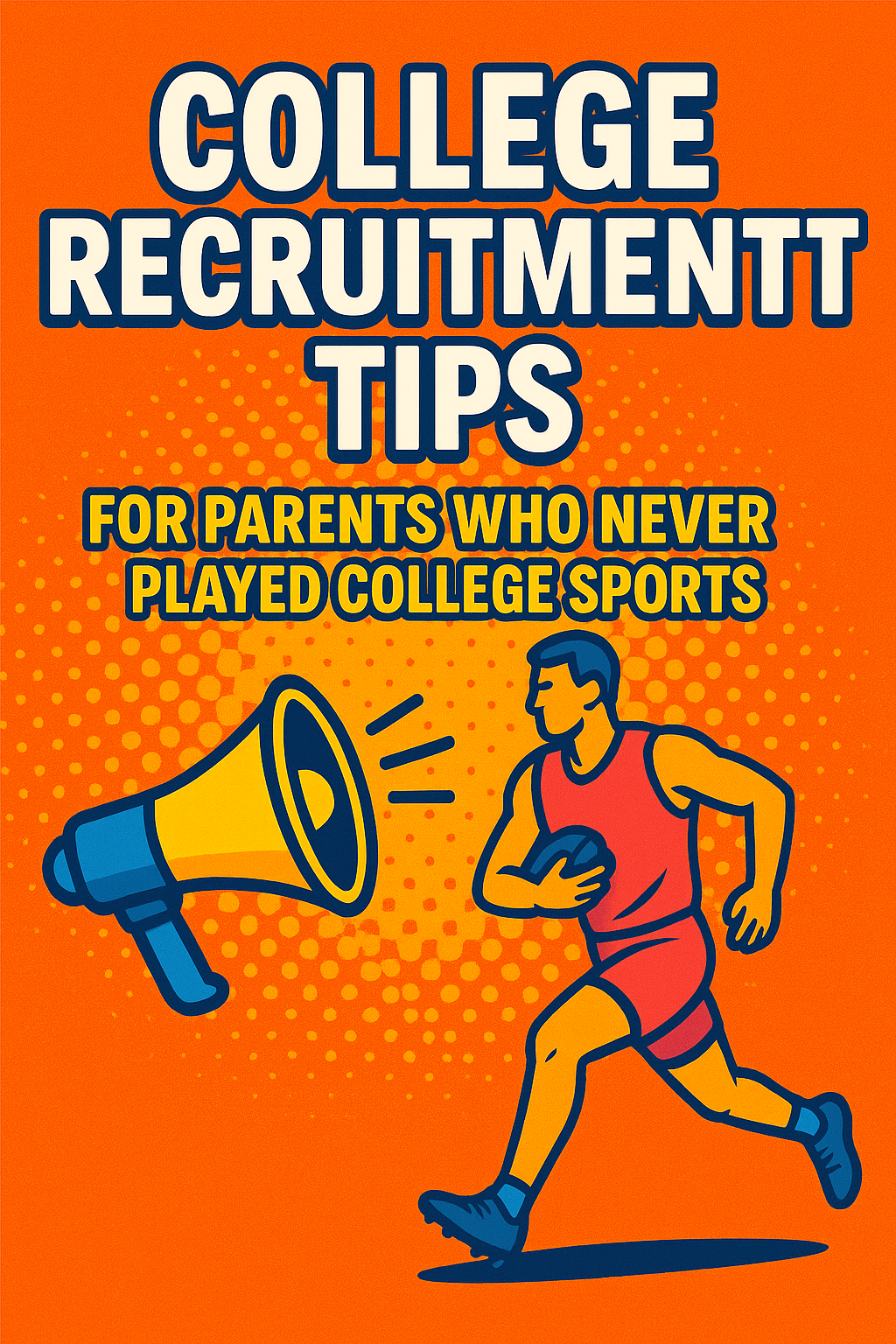If you’re a parent whose child dreams of playing sports in college — but you never played college athletics yourself — it can be overwhelming to know where to begin. From highlight videos to recruiting visits and eligibility rules, there’s a lot to navigate.
The good news? You don’t need to be an expert to support your child. You need the correct information and a willingness to help guide the journey.
Here are key tips to help you and your student-athlete succeed in the college recruitment process.
⸻
1. Understand the Basics of College Recruiting
You can start by learning how the college athletic system works. There are different levels of play: NCAA Division I, II, and III; NAIA; and junior colleges (NJCAA). Each has its own eligibility rules, scholarship opportunities, and recruiting timelines.
“Parents unfamiliar with college athletics benefit most from first learning the recruiting calendar and scholarship structures” (Johnson, 2022).
Not every athlete ends up at a Division I school, and that’s okay. Many athletes thrive academically and athletically at smaller programs.
⸻
2. Focus on Academics First
Strong grades open more doors. College coaches want athletes who are eligible, responsible, and likely to stay eligible once enrolled. Please encourage good study habits and check the NCAA or NAIA eligibility requirements early to ensure compliance.
“A 3.0 GPA or higher can significantly increase the number of schools willing to recruit a student-athlete” (Andrews & Parker, 2023).
⸻
3. Build a Highlight Video and Online Presence
A quality highlight video is one of the most essential tools in recruiting. It should be brief (3–5 minutes), include the athlete’s best plays, and display their name, graduation year, and contact information.
Use platforms like Hudl, YouTube, or SportsRecruits to share content.
“Over 80% of college coaches begin evaluating athletes by watching highlight reels online” (Lopez, 2024).
⸻
4. Encourage Proactive Communication
Coaches rarely find athletes by accident. Help your child research schools, find coach contact info, and send personalized emails with academic and athletic info, along with their video link.
“Student-athletes who email 15+ college coaches by junior year triple their chance of being recruited” (Nguyen, 2023).
You don’t need to write the email for them — help them stay consistent and organized.
⸻
5. Attend Camps and Showcases (Strategically)
Sports camps and showcases can be valuable — but only if college coaches your child is interested in are attending. Always check the coach lists before paying for an event.
“Families who target camps based on genuine interest from schools report better outcomes and lower costs” (Miller, 2022).
⸻
6. Use a Spreadsheet or Tracker
Could you keep track of communication with coaches, deadlines, and eligibility documents? Organization helps reduce stress and shows your child how to approach the process like a professional.
“Recruiting success is closely tied to how well families stay organized and follow up” (Rodriguez, 2024).
⸻
7. Be Supportive, Not Overbearing
It’s easy to want to “take over” when your child seems uncertain, but coaches want to hear from the athlete, not the parent. Your job is to guide, encourage, and serve as a sounding board — not to be the voice in every email or call.
“Athletes whose parents allow them to take ownership of the recruiting process build stronger relationships with coaches” (Fields, 2025).
⸻
Final Thoughts
You don’t need to be a former college athlete to help your child become one. With a supportive attitude, strong academics, and a proactive game plan, you’ll be an essential part of their journey. Be curious, stay informed, and let your child lead — with you right behind them, cheering them on.
⸻
References
• Andrews, K., & Parker, J. (2023). Balancing academics and athletics in the recruiting process. College Sports Advisor Journal, 7(3), 18–22.
• Fields, M. (2025). Parental roles in successful athletic recruiting. Youth Sports Psychology Quarterly, 9(1), 14–19.
• Johnson, L. (2022). The non-athlete parent’s guide to recruiting. Parent Playbook Magazine, 6(4), 33–37.
• Lopez, R. (2024). Digital first impressions: The power of highlight videos. NextGen Recruiting Report, 10(2), 20–24.
• Miller, A. (2022). Maximizing camp opportunities for high school athletes. Elite Prospect Weekly, 8(2), 26–30.
• Nguyen, T. (2023). Effective athlete-to-coach outreach in recruitment. Recruit Ready Review, 5(1), 12–16.
• Rodriguez, S. (2024). Staying organized through the recruiting journey. Athletic Prep & Planning Journal, 11(3), 17–20.



Comments ()